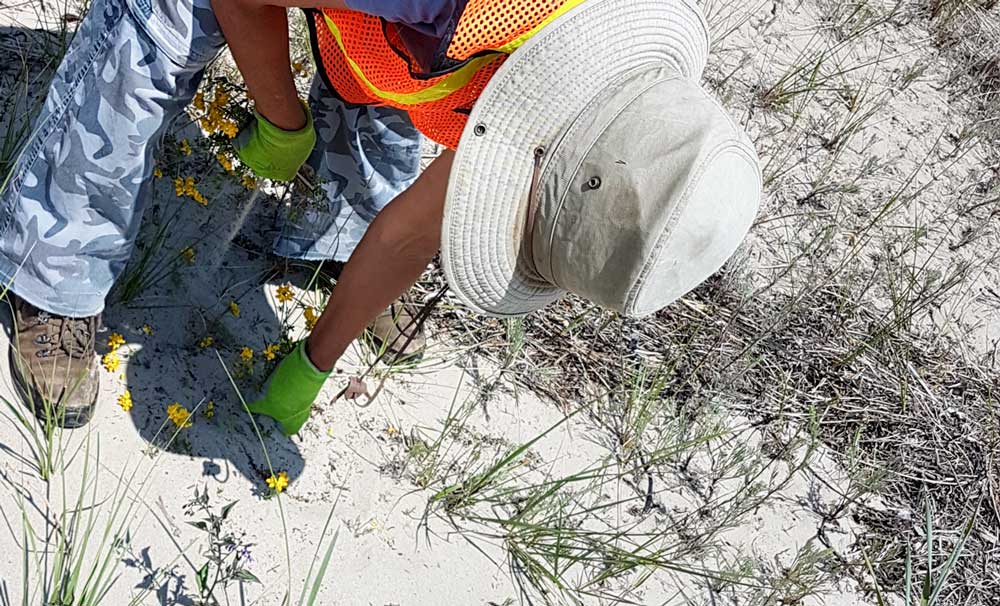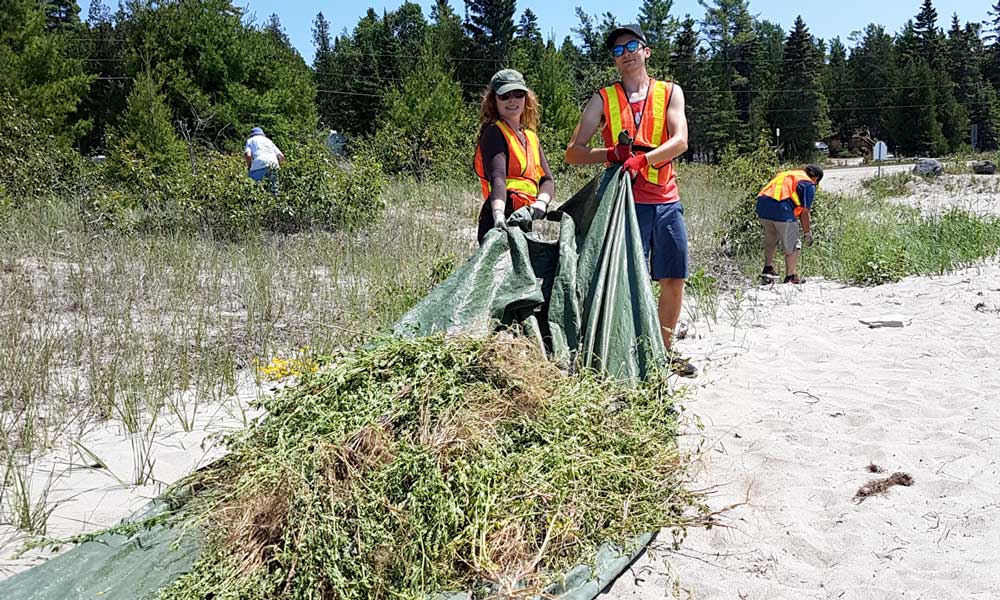PROVIDENCE BAY—On a glorious day this past Wednesday, July 11 more than a dozen workers and volunteers embarked on an important and largely unrecognized task of improving the essential, dynamic nature of Manitoulin’s famed Providence Bay Beach.
With many people on that day enjoying their vacation by sunning, swimming and throwing their Frisbees, these beach guardians worked on the inshore periphery. To this reporter’s untrained eye, many of the plants looked the same. Poky plants that discouraged you from making that dramatic dive for a spiked volleyball or retrieving that football your brother could never just get it right.
However with closer inspection and education from the masters, it became apparent which of the green things were necessary and those that needed to go. Guided by Manitoulin’s ecologistic and botatanistic superhero, Judith Jones, the crew methodically weeded out the good from the bad of appropriate Manitoulin dune vegetation. The main target this year, as in the last couple of years, was sweet white clover. To me, these plants looked very familiar to those you would see on road-sides and any pasture you would find around the Island.
As it turns out, this is the case. Sweet white clover is the fragrant and frilly common plant you will have seen but may not have recognized, as I didn’t. Although an important, native species to our area, sweet white clover on our dunes disrupts the natural, dynamic nature on Lake Huron beaches. Plants such as these are great at picking up and growing where they will but they also impede the natural wind and wave action on beaches. Because they are good at resisting wind they tend to make new mini-dunes around them that don’t allow wind and sand beyond them. In high water events, marsh areas form behind the new bunkers and change the aspect of a beach that we are normally drawn to, with new stagnant, mosquito breeding havens.

trefoil from the dunes.
As I have learned, Lake Huron has a regular 30-year water level cycle. We, thankfully, are finally getting above the average and benefitting with more accessible boat launches and dock slips. The other benefit of higher levels is the natural flushing of high water debris areas. Unfortunately, this only happens when the natural dune vegetation is in place. Plants like sweet white clover, phragmites, birdsfoot trefoil et al disrupts the cyclical nature of our shorelines like the Providence Bay beach.
Luckily, Central Manitoulin was granted a 25 year management plan to maintain the beach in its natural state. Groups like the Manitoulin Phragmites Project and Manitoulin Streams have championed this initiative to provide much needed assistance for this important effort. They have been removing the unnatural Scotch pine and willows on the sand but still maintaining “open sand, recreational areas” that also draw people to visit these unique areas. The goal is to keep people enjoying these oases while preventing the unrelenting wind and sand onslaught that had Providence Bay residents regularly sweeping sand off of their streets in years past.
During my visit to the beach this past week I was amazed at how much of this damaging vegetation was being pulled out and dragged down the beach. I was surprised to learn that just two years ago, sweet white clover was removed in bales! This is a testament that sustained yearly maintenance will keep our beautiful beach the drawing force that it can be. Congratulations to all the people who helped out on this year’s Beach Action Day.





